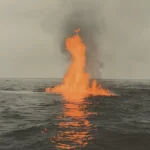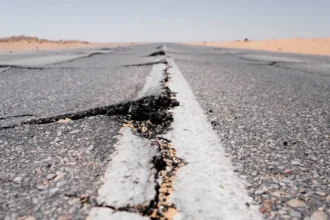Antarctica’s Surprise Ice Growth Reverses Long-Term Melting Trend
In a surprising twist that scientists didn’t expect, Antarctica has actually gained ice instead of losing it over the past few years. This unexpected discovery comes from researchers studying the Antarctic Ice Sheet using special satellites that measure Earth’s gravity. According to New York Post and Science China Earth Sciences, this ice growth happened between 2021 and 2023, after many years when ice was melting away.
How Scientists Measure Ice Changes
Scientists use special satellite missions called GRACE and GRACE-FO to watch Antarctica’s ice. These satellites detect tiny changes in Earth’s gravity field that happen when ice melts or grows. Think of them like giant scales in space that can weigh the entire continent. The researchers used an improved method with these gravity measurements to get more accurate results about what’s happening to the ice.
The Numbers: Before and After
| Time Period | Ice Change | Main Areas |
|---|---|---|
| 2011-2020 | Lost 142 gigatons/year | West Antarctica & East Antarctica |
| 2021-2023 | Gained 108 gigatons/year | Wilkes Land-Queen Mary Land region |
According to HindustanTimes, Antarctica gained about 108 gigatons of ice each year between 2021 and 2023. A gigaton is an enormous amount of ice – imagine a block of ice the size of 1,000 Empire State Buildings. This new ice temporarily slowed global sea level rise by about 0.3 millimeters per year.
The biggest changes happened in East Antarctica. According to LiveNowFox, four major glacier basins that were previously losing ice started gaining it instead: Totten, Moscow University, Denman, and Vincennes Bay. According to Sciengine, these areas had lost ice at 47.64 gigatons yearly during 2011-2020.
Why Is This Happening? Unusual Weather Patterns
- Extra Snowfall: Antarctica got much more snow than normal between 2021-2023
- Atmospheric Rivers: Special weather patterns brought moisture from warmer places
- Moisture Corridors: These “rivers in the sky” carried water vapor to Antarctica
- Extreme Events: These weather patterns caused many heavy snowfall days in East Antarctica
Think of atmospheric rivers as giant invisible highways in the sky that carry huge amounts of water vapor from warmer areas near the equator all the way to the cold polar regions. When this moisture reaches Antarctica, it falls as snow, adding to the ice sheet.
What This Means for Your Future
Before getting too excited, you should know that scientists don’t think this ice gain will continue long-term. According to Daily Galaxy, this recent growth doesn’t change the overall concern about Antarctica’s ice. Remember that Antarctica holds more than half of the world’s freshwater in its ice sheet, so what happens there affects sea levels everywhere.
The big question you might wonder is whether this means climate change is no longer a problem. Scientists say no – this is likely just a temporary weather pattern, not a permanent reversal of the long-term melting trend. You’ll want to keep watching what happens in Antarctica, as it affects coastlines worldwide.











